
Undermount Sinks
View Our Range Of Undermount Kitchen Sinks
View Our Range Of Undermount Kitchen Sinks
The popularity of undermount sinks has surged in recent years due to their aesthetically pleasing appearance and practical advantages over traditional top-mount sinks.
An undermount sink is installed below the countertop surface, resulting in a seamless transition between the counter and the sink basin.
This not only gives your kitchen an upscale look but also offers better functionality by allowing you to easily sweep crumbs and spills directly into the sink without encountering any raised edges or rims.
Undermount sinks are designed for use with solid countertop materials such as granite, quartz, or solid surface composites.
Sink Types | Benefits | Installation | FAQ’s

An undermount sink is a popular choice for many contemporary kitchens.
Known for its sleek design and clean lines, it can easily transform the look of your kitchen space.
One important factor to consider when shopping for an undermount sink is the material from which it’s made. In this section, we will explore four common types of undermount sink materials: stainless steel, granite composite, cast iron, and fireclay.
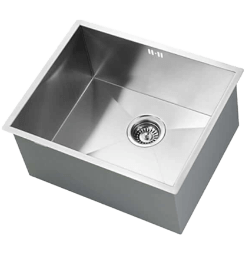
Stainless steel sinks are the most popular among homeowners who opt for undermount installations. Some reasons for their popularity include:
Durability: Stainless steel sinks are tough and resistant to dents, scratches, and stains.
Longevity: A high-quality stainless steel sink can last up to 15 years or more with proper maintenance.
Affordability: These sinks come in a wide range of prices, suiting various budgets.
Versatility: Available in different gauges (thickness), sizes, shapes, and finishes to complement any kitchen décor.
Hygiene: The non-porous surface inhibits bacterial growth and makes it easy to keep the sink sanitised.
Some potential drawbacks of choosing a stainless steel undermount sink are noise during use (can be mitigated by selecting one with sound-dampening pads) and visible water spots in hard water areas.
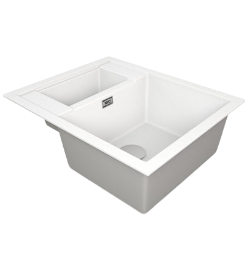
Granite composite undermount sinks have gained traction due to their aesthetic appeal as well as functional properties. Featuring a mixture of granite or quartz aggregates combined with acrylic resins, these sinks offer several benefits:
Beauty: Mimics the appearance of natural stone surfaces resulting in an elegant addition to your kitchen.
Low Maintenance: Simple cleaning routine required considering its hardy construction makes it resistant to chipping and cracks.
Resilience: Naturally absorbs shocks from pots or pans dropped into the basin without leaving marks behind.
Heat Resistance: Withstands heat up to 536°F, ensuring hot pots won’t cause damage.
However, some cons of granite composite undermount sinks include a higher price tag when compared to stainless steel options and potential wear-and-tear over time in lighter-coloured models vulnerable to stains from dark liquids such as red wine or coffee.
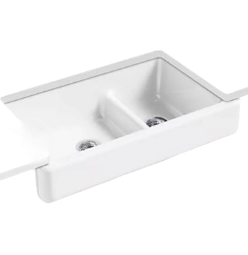
With its timeless appeal and long-standing reputation for quality, cast iron remains another favourite material for undermount sinks. Known for their sturdiness as well as beauty, they boast several advantages:
Heft: The substantial weight of a cast iron sink can instill confidence since it’s less prone to breaking or chipping.
Enamel Coating: A glossy porcelain enamel finish available in a variety of colours not only protects the surface but adds visual charm to your kitchen.
Sound Absorption: Reduces noise generated during use due to its solid construction.
On the flip side, cast iron sinks are typically more expensive than other types, heavier (requiring additional support), and susceptible to scratching or chipping if sharp objects come into contact with the enamel layer.
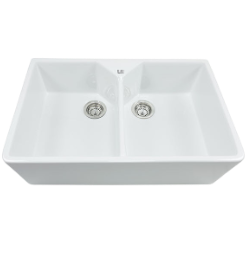
Lastly, fireclay is another material that you might consider when selecting the perfect undermount sink. Handcrafted from specially formulated clay fired at extremely high temperatures (2000°F), fireclay sinks possess unique characteristics:
Heat Resistance: Capable of handling high temperatures without cracking makes them suitable for heavy-duty cooking tasks.
Chip & Scratch-Resistance: Unlike other materials like stainless steel or cast iron with porcelain finishes, fireclay has inherent resistance properties.
Filter
Sink Size
Sink Type
Bowl Configuration
Finish
Undermount sinks offer several advantages to homeowners, from easy cleaning and durability to versatile design options that complement a wide range of kitchen styles. Incorporating an undermount sink into your kitchen design can not only improve the functionality but also add a touch of elegance and refinement.
One of the most appealing aspects of undermount sinks is their ease of cleaning. Since they are installed under the countertop, there is no rim above the counter surface that can collect dirt, crumbs, or debris.
This seamless integration between the sink and countertop allows you to easily wipe any mess directly into the sink basin without worrying about it getting caught in crevices.
Here are a few key reasons why undermount sinks promote better cleanliness:
Undermount sinks are known for their durability, which can be attributed to both their secure installation method as well as their sturdy materials.
When properly installed, these sinks provide robust support by being firmly anchored beneath your countertop.
The weight distribution on this type of installation alleviates stress on vulnerable corners and edges, leading to increased longevity.
Material selection also plays a significant role in determining the lifespan of an undermount sink:
Another attractive feature of undermount sinks is the plethora of design choices available to suit your specific kitchen style or requirements.
Without a rim interrupting the countertop’s flow, your choice of counter material remains uninterrupted and on full display, making these sinks an ideal option for luxurious materials such as granite or quartz.
Here are some design possibilities offered by undermount sinks:
In short, due to their durability, ease of cleaning, and versatile design options, undermount sinks make a great addition to any kitchen remodelling project.
By selecting the right material and configuration for your needs, you’ll enjoy an elegant yet functional focal point in your kitchen for years to come.
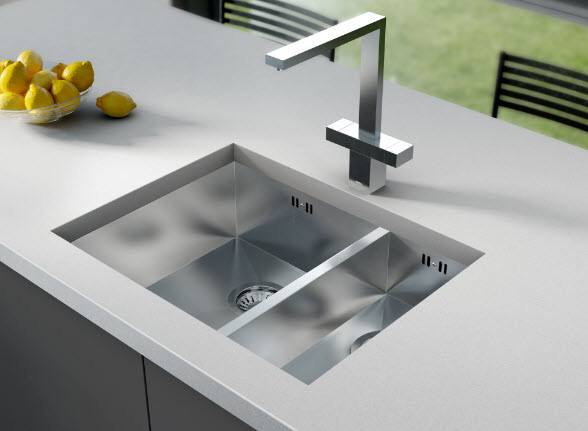
When planning to install an undermount sink, there are several important factors to consider. In this section, we will delve into the different aspects of installation, including countertop material compatibility, cabinet support requirements, and proper sealing and caulking techniques.
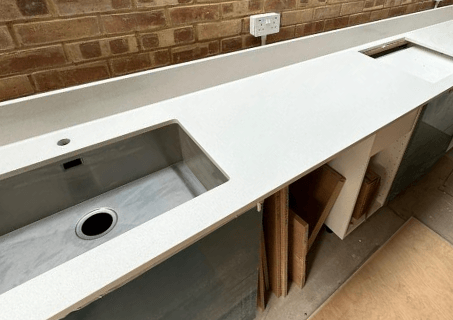
Undermount sinks are compatible with various countertop materials but not all. They work best with solid surface countertops such as:
Being securely fastened underneath the countertop ensures a seamless transition between the sink and the counter surface.
However, undermount sinks are not suitable for laminate or tiled countertops as these surfaces do not provide enough support for the sink’s weight and cannot be properly sealed against water intrusion.
When selecting a countertop material for your undermount sink kitchen project, make sure to consult with professionals regarding compatibility and proper installation methods to ensure a long-lasting result.
Installing an undermount sink requires adequate cabinet support due to their weight-bearing nature compared to top mount/drop-in sinks.
The cabinet must be strong enough to hold the weight of the sink itself along with any additional force exerted when filled or used for heavy-duty tasks.
Most cabinets can handle the weight of stainless steel and composite sinks; however, cast iron or fireclay sinks may pose challenges because they demand sturdier cabinets and sometimes customised structures including:
Before you proceed with your under-counter sink kitchen installation plans, consult a professional contractor or installer who can assess your existing cabinetry design and advise on strengthening methods if required.
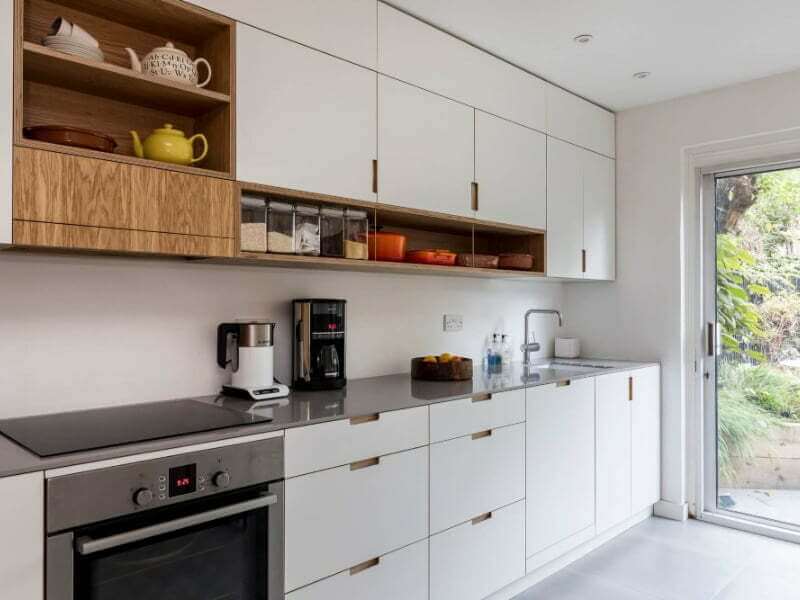
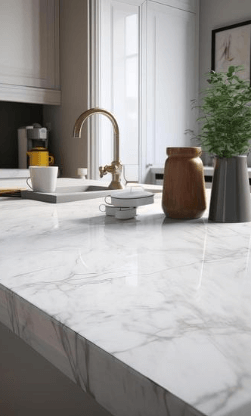
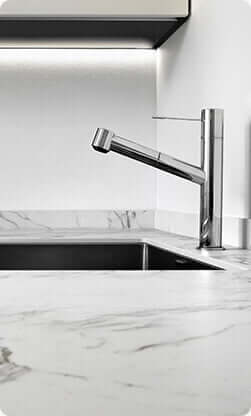
A crucial aspect in installing an undermount sink is the proper sealing and caulking to prevent water intrusion.
Improper sealing can lead to long-term problems such as mould, mildew or countertop damage.
Follow these steps to achieve a watertight seal:
In summary, installing an undermount sink necessitates careful consideration of several factors like compatible countertop materials, cabinet support requirements, and appropriate sealing techniques.
By keeping these in mind during your project planning process, you will be better equipped to make informed decisions resulting in a successful installation and an appealing modern look for your kitchen space.
When planning to install an undermount sink, it is essential to factor in the associated costs. While these sinks may add a touch of elegance and functionality to your kitchen, the price tag for installation can vary based on several factors. In this section, let’s break down the primary cost determinants for installing an undermount sink.
The material used in constructing the sink plays a significant role in determining its cost. Stainless steel undermount sinks are known for their affordability, with prices starting from £200 On the other hand, premium materials such as fireclay or cast iron can significantly raise the cost, with some models costing upward of £600. Granite composite sinks fall into a mid-range pricing category, beginning at around £400.
When budgeting for your new undermount sink, do not forget about potential extra expenses involved, such as:
Taps – New taps maybe needed if your existing one doesn’t match or fit with your new sink
Plumber – If plumbing adjustments are required during installation (such as modifications or extensions), expect additional fees charged by plumbers.
Waste Disposal System – Some homeowners take this opportunity to install or upgrade their waste disposal system, incurring an increased cost.
In summary, installing an undermount sink can vary in price depending on the material and scope of labour involved.
To create a comprehensive budget for your renovation, consider all ancillary expenses beyond the initial cost of the sink itself. By doing so, you will have a better understanding of what to expect financially and can determine if this type of sink is the right choice for your kitchen.
The primary difference between undermount sinks and drop-in sinks lies in their installation method and appearance. With an undermount sink, the basin kitchen sink is installed directly under the countertop, meaning that the countertop edge hangs slightly over the sink bowl.
This creates a seamless transition between your countertop and your sink units, resulting in a sleek and modern look. The lip of the sink is concealed beneath the counter for both small kitchen sinks or large kitchen sinks, enhancing visual aesthetics.
On the other hand, drop-in sinks (also referred to as top mount sinks) are mounted above the countertop with their rim resting on it. The kitchen basin sink remains visible along with its lip when using this type of installation.
Drop-in sinks are generally easier to install, but may not provide the same seamless appearance that undermount sinks do.
In summary:
The cost of installing an undermount sink can vary depending on several factors such as labour costs, location, worktop material compatibility (e.g., granite versus laminate), accessories included (such as cutting boards or colanders), and whether you choose a single or double sink kitchen setup.
Additionally, different materials like stainless steel, granite composite, cast iron, or fireclay also impact cost margins.
A typical price range for purchasing an undercounted sink alone ranges from £200 to around £600; however premium-quality models might cost upwards of £800 or more.
As for professional installation fees (if you opt out of a DIY approach), those may vary significantly based on your area’s standard rates – expect anywhere from £200 to £400.
Undermount sinks offer several advantages over other types of installations:
Easy to clean: The seamless connection between countertops and sink kitchen units eliminates any crevices where debris can accumulate.
To clean up after meal prep, simply wipe crumbs and spills directly into the kitchen basin sink without anything getting caught along edges.
Aesthetically appealing: Undermount sinks provide a sleek and modern look that elevates many kitchen designs.
Whether you opt for a small undermount sink or a sunken kitchen sink installation, your space will benefit from clean lines and smooth transitions.
Durable & long-lasting: Due to their support structure beneath the worktop, undermounted sinks boast impressive durability levels – especially with materials like stainless steel or cast iron – ensuring they’ll last through years heavy use.
Versatility: With various materials available in the market, including granite composite or fireclay options, homeowners enjoy great flexibility when it comes to selecting a fitting design choice.
Ultimately, an undermount sink offers practical advantages regarding cleaning ease while also presenting diverse options for customising your kitchen’s overall aesthetic appeal.
A fantastic small company , product was excellent , great value (they also got the under sink we wanted which was £160 cheaper via them) helpful and the guys who measured and fitted were A1. Would recommend if you are looking for new worktops you must try them

Ron Sanders
Posted on Google
Have used these guys twice now and they’re a dream to work with!
Quality beautiful worktops
When templating they advise on what would look best without being pushy – which is always appreciated
And then the fitting is always clean and tidy
Oh nearly forgot they’re great value too!
Can’t recommend them enough!!!

Nicola Smith
Posted on Google
Fab company. Very knowledgeable staff who go above and beyond to get the right product for you. Very experienced and polite fabricators and fitters. Would use again.

Helen
Posted on Google
Very happy with my new calacatta supreme worktop to replace an old Corian worktop. The service from Jeremy and the team has been faultless – excellent responsive communication to questions, each step was completed as planned (templating, removing old worktops, fitting). They were also flexible on me changing my mind on which worktop to go for and sending out new samples ahead of templating. The two other companies I had quotes from would have been a lot more expensive or a lot more disruptive to my use of the kitchen. As it was there was only one morning when my kitchen was taken over by the job. The new worktop is much easier to keep clean and really finishes my kitchen beautifully. Would highly recommend Solid Stone Worktops.

Alice Munro
Posted on Google
I can’t fault Ollie or his stone fitters. He gave great advice, sourced the perfect stone for my kitchen countertop and gave me a great price. They fitted it super quickly, it looks fantastic, is really durable and the whole process was very easy. I highly recommend them!

Hannah
Posted on Google
Very pleased with overall service including professionalism, information provided, variety and choice, quality of work and competitive price of quartz worktops and fitting. Thank you

New Customer
Posted on Google
We had a great experience with so!idstone and would definitely recommend them. Very professional. Oliver sent me all the samples I requested and lots of quotes. Very helpful. Templating and fitting was completed by very experienced workers and finished to a high standard.

Jean Wythe
Posted on Google
I cannot recommend these guys enough. We’ve fitted our kitchen ourselves and I was looking for some support in choosing a product we could afford. Ollie and the team were superb in giving us options that matched our ideal tops and talked us through the various steps really professionally. Before you knew it the templating was done – another lovely man BTW – and today, worktops are in. Fitted beautifully by 2 young lads who were fantastic. I couldn’t be happier. Thanks so much Solid Stone.

Kerry
Posted on Google
Hi Josh/Ollie/Jeremy,
Just wanted to say thank you for the amazing service your company has offered. It’s been a real pleasure to deal with yourself & your colleagues. The worktop was fitted promptly and efficiently and looks absolutely stunning.
Thank you for the basin worktop too – really helps the room come together. We have a few more areas that will need stone surfaces so look forward to working with you over the next couple of months to help complete our project.
Kind Regards & Thanks – SP

SRP
Posted on Google
Very happy with our worktop. Ollie was very helpful from the start and made the necessary arrangements for me to go and view the worktops in person to help make my descison. Sorted me out with a great price as well.
The team arranged to fit my worktop on a timetable that fitted into out build schedule perfectly, which was really helpful.
Very happy to recommend Solidstone.

AJ
Posted on Google
I recently purchased and had installed the bloomstone grigio sparkle quartz worktop in our new kitchen. I couldn’t be happier with the results. The quality, fitting and finish are really great. Olly was very responsive and the turnaround from templating to fitting was within a week. I was really pleased with the overall experience.

Tanya Khatun
Posted on Google
The guys at solid stone was quick and efficient with a good turn around They made the experience easy and painless

Mark Willson
Posted on Google
Just had my kitchen worktops changed to quartz by solid stone worktops LTD.what a fantastic job they have done.very professional and would highly recommend this company

Phil Sheen
Posted on Google
From the very beginning of the process, the team at Solid Stone Worktops has been truly superb. Professional, responsive, very helpful and good value for money. The samples were sent quickly, when I had questions I could easily reach out to Jeremy and Ollie to be guided, and the installers have been a pleasure to deal with. We also appreciated the quick turn around. We are very happy with our new quartz worktop and would definitively recommend the service of Solid Stone Worktops. Thank you!

Manuela Mirkos
Posted on Google
Excellent company to do business with, a large range of quality worktops and workmanship is exemplary. All work was completed quickly and on time and a good price.

Ranjit Basra
Posted on Google
I can’t fault Solid Stone Worktops. After our existing supplier let us down, Ollie and the team were tasked with getting the order templated, fabricated and installed in just 10 days. From my first interaction they were consummate professionals and the quality of the materials coupled with the expertise on hand, and the high-level finish made them an absolute dream to work with. Ollie shared videos of each material – not just photos – so I could see how they interact with the light and the fact you can deal with them over WhatsApp as well as by phone just added to their overall appeal for me. We’re already working with Ollie to discuss a future project and I’ll be using them for any and all worktop needs I have in the future.

Vicky Woollaston
Posted on Google
Oli and the team did a great job of our worktop. We got quotes from lots of different companies, however, none of them could compete with the price. Oli was very patient throughout and didn’t pressure us into making a deposit. However, once the deposit was paid, it was a no rush experience until we had an install date. Once the worktops were ready, Solid Stone templated and installed within 7 days which we were very impressed with.

James Harris
Posted on Google
Excellent service, very professional, good communication and information, pleased with quality of work and competitive pricing including fitting for quartz worktops. Good choice and variety. Thank you

Winnie Spencer
Posted on Google
Found this company on Google to get a comparison to the quote for quartz worktop I had from Howdens. They were a lot cheaper and much faster turnaround. It was a pleasant surprise that the service was also excellent, accommodating us viewing samples and changing the installation dates due to our project delays. Ollie was friendly and responsive throughout. Would highly recommend it.

Ricardo Moreira
Posted on Google
Had an excellent experience with Solid Stone worktops, from pre-sales right through to fitting. Quick to reply and make changes where we needed, the templater did a fantastic job with our exceptionally uneven walls, and the final result looks fantastic. Would not hesitate to recommend.

Amy Swettenham
Posted on Google
I’ve just had my kitchen worktops refitted in an existing kitchen and it all went smoothly and looks great! Ollie worked through all the details with me, from choosing the materials, sending out samples, organising the templating, and then organising the fitting. The fitters were efficient and handled the job with ease. They even helped to fit the tap!
All in all, very happy with the job!

Karl DeMenezes
Posted on Google
Had the pleasure of ordering my kitchen worktop from Solid Stone worktops through Ollie. Was on the hunt for quartz worktop but many companies were outside of our budget, that was until I came across Solid Stone. Service was exceptional from start to finish. The quote was competitive and Ollie kept me informed throughout the whole process. It’s usually 7-10 working days between templating and installation, however they fitted it within 5 working days! Extremely happy with my worktop and the service. The worktop looks beautiful in our kitchen. Would definitely recommend!

SANIA RAMZAN
Posted on Google
The folks at Solid Stone have provided a great service. From the initial enquiry through multiple phases of decision making, they were responsive and helpful. The end result looks great, and was good value.

Mark Schofield
Posted on Google
Excellent company. First class customer service and great value. Fully recommended.

P T
Posted on Google
Oliver and his team were absolutely brilliant from initial contact to completion of the works and very patient as the date had to be changed due to kitchen not being quite ready which wasnt an issue to them. I had 5 quotes from different companies however olivers customer service blew me away! He was the only one that made the effort to call me to find out more about the stone we wanted which they didn’t even stock, however contacted the supplier Noble stone which was near the office and they were able to install the stone we had chosen and fell in love with. Pricing was competitive and within our budget thanks to oliver going that extra mile to get it done and even managed to get our window sill done last minute which yet again wasnt issue if done in time. Overall service was great oliver was always happy to answer any questions we had and nothing was ever an issue which was great given we are in the middle of a house refurbishment. We are already thinking to use solid stone again as we are looking for a mirror back splash for our new kitchen.

Luis Navalha
Posted on Google
I’m in the trade and I don’t usually book trades without a personal recommendation. But given the worktops where our last expenditure on the house, Budget was tight and I needed to shop around. I’m really glad to have found Ollie at solid stone worktops. Not only where they very very competitive. But they went the extra mile to work with my budget and the turnaround was incredibly quick. It’s hard to imagine a better result. I was particularly please they managed to end the worktop midway on the lip of the butler sink. All the workers extremely pleasant. They were also very accommodating of the addition of some last minute details, much appreciated.

Christophe Spurling
Posted on Google
Very happy with our worktop. Ollie was very helpful from the start and made the necessary arrangements for me to go and view the worktops in person to help make my descison. Sorted me out with a great price as well. The team arranged to fit my worktop on a timetable that fitted into out build schedule perfectly, which was really helpful. Very happy to recommend Solidstone.

Adam Daglish
Posted on Google
We are really pleased with our quartz worktop and the efficient friendly professionalism of everyone in Solid Stone Worktops Ltd . Great company, would recommend them.

Safo Kordestani
Posted on Google
Ollie and his team were brilliantly patient from the beginning. We were looking for extremely good value for money and also a great finish. The quartz we chose was priced very competitively and although we changed our minds and the design a couple of times, Ollie was very patient and flexible with us. It’s a big decision to make and we knew once it was down, it was going to be there for a very long time. We can’t thank Ollie and his team enough for helping us in having the dream quartz worktop. The ‘leather’ feel choice was an option unknown to us but one we were very pleased to have the opportunity to choose. Thank you once again for being so brilliantly flexible and patient as well as excellent value for money!

Elliott Plumb
Posted on Google
© Copyright Solid Stone Worktops Ltd - All Rights Reserved
Solid Stone Worktops Ltd is registered in England and Wales No: 14147310 | VAT No: 470 2209 22
Trading address: 483 Green Lanes, London, N13 4BS
Search

Act Now To Save up to £1500 - Up to 50% Off QUARTZ + Free Cutouts & Templating